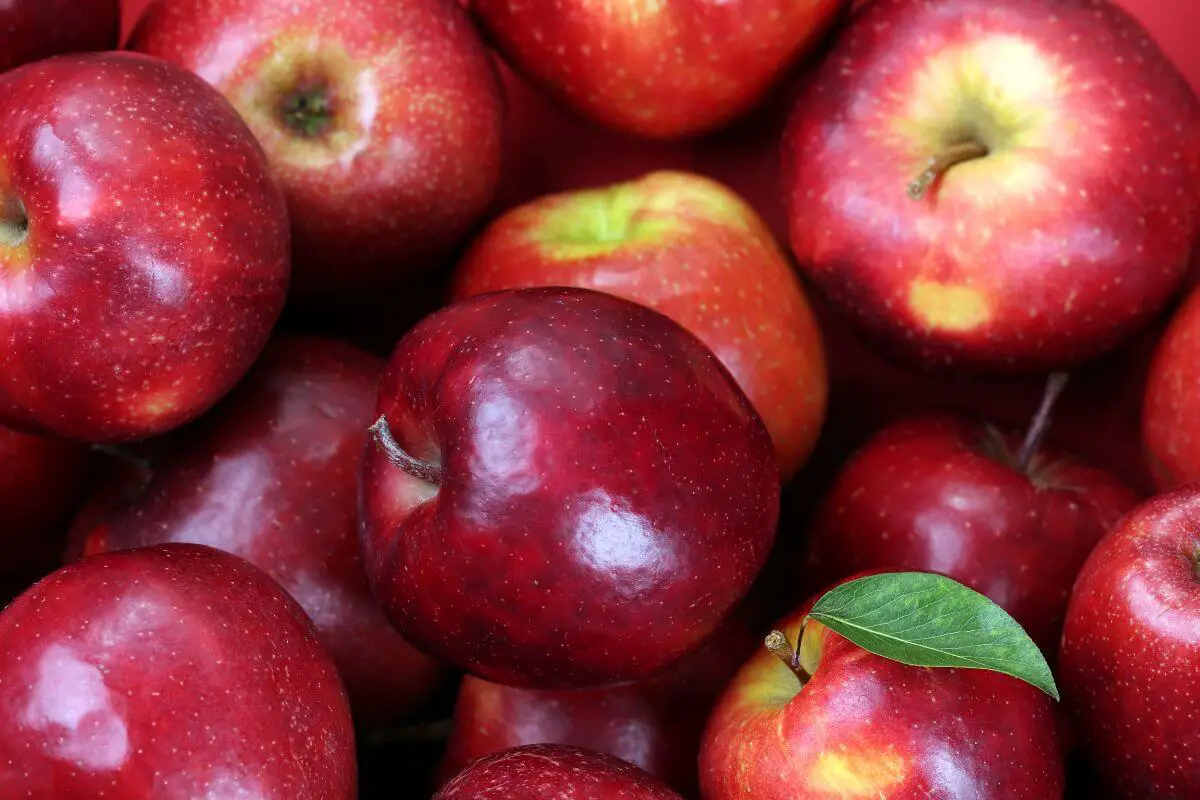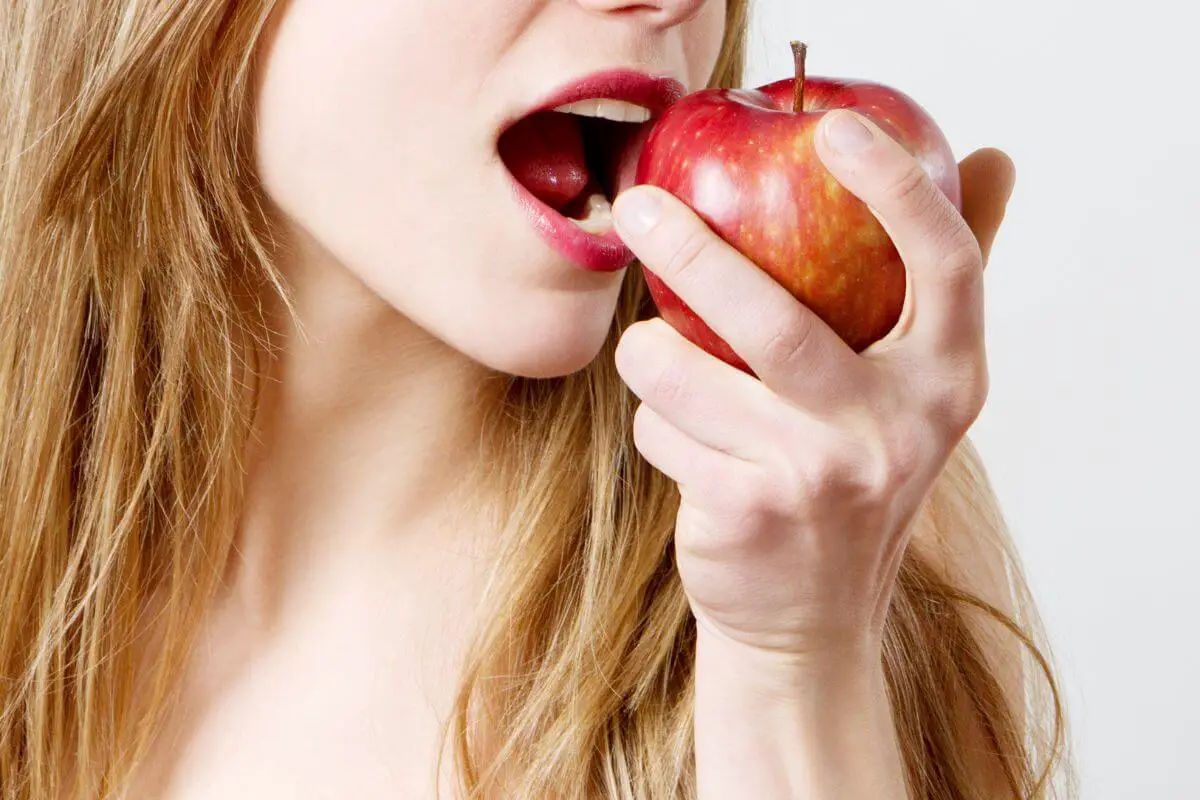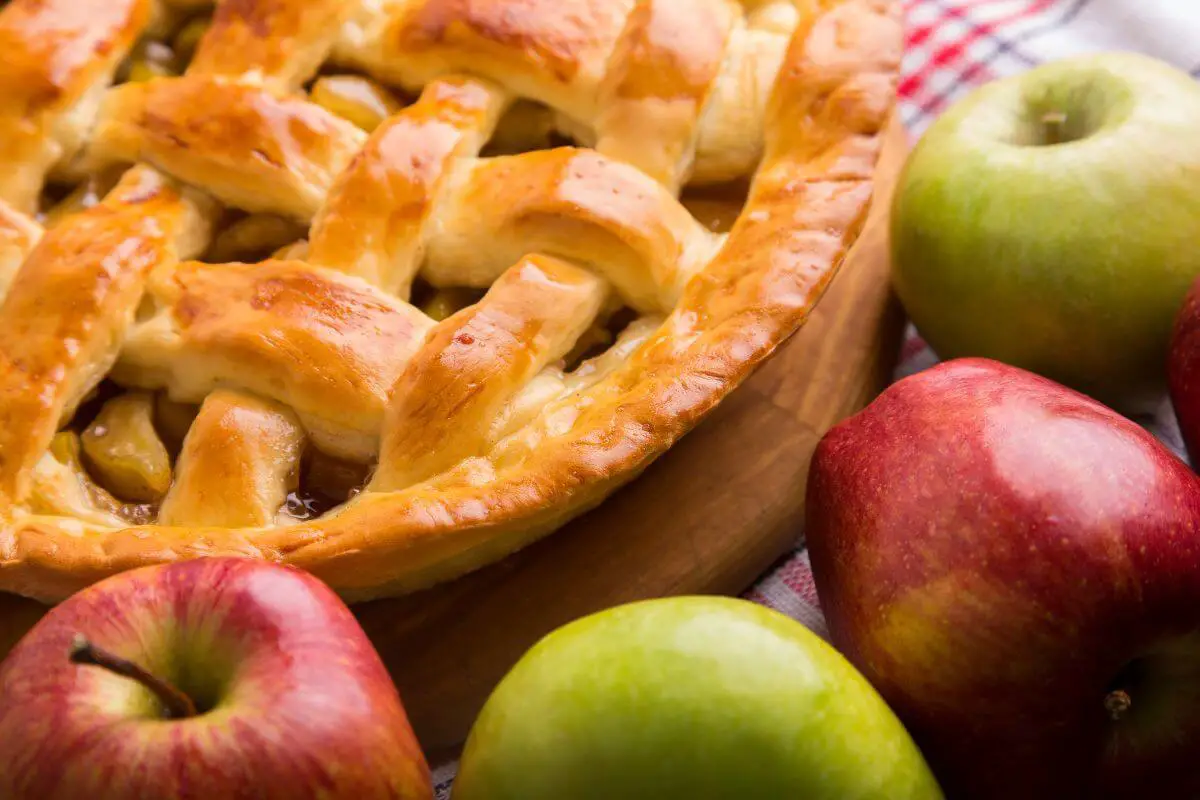Is the apple truly a fruit or is it a vegetable? While you might already know the answer to this — yes, it’s a fruit — there’s more to this answer than you realize.
Apples are fruits, and this can be explained from both a culinary and botanical point of view. Botanically, apples are fruits because they contain seeds and come from a flowering plant’s ovaries. The same is true from a culinary perspective because apples have a sweet flavor and are often eaten raw or used in desserts.
I have only scratched the surface. Join me as I dive into the different varieties of apples, their health benefits, and their uses. Let’s learn more about this favorite fruit and the new ways it can be incorporated into your diet.
- Related article: Comparing Fruit vs Vegetable
5 Key Takeaways on Is Apple a Fruit or Vegetable
- Apples are undoubtedly fruits. That’s because they hold seeds and come from the ovaries of a flowering plant.
- Apples offer a ton of health benefits, including boosting heart health, improving digestion, and potentially protecting against cancer. Eating apples regularly can also aid in weight loss, blood sugar regulation, and mental health improvement.
- Among the popular varieties of apples are Golden Delicious, Granny Smith, and Red Delicious. They each have a unique taste and a range of culinary uses.
- There are different ways to enjoy apples. You can eat them raw as a snack, use them in desserts, or blend them into smoothies.
- Apples contain essential vitamins and minerals. It’s packed with vitamin C, potassium, and antioxidants as polyphenols.
Are Apples Fruits?

| Perspective | Why Apples Are Fruits |
|---|---|
| Botanical Perspective | Apples are the ripe ovary of an apple tree, a flowering plant, that contains seeds. |
| They consist of the tissue surrounding the ovary, not just the ovary itself. | |
| Culinary Perspective | Apples taste sweet, can be eaten raw, and are used in desserts. |
Yes, apples are fruits — there is no doubt about it. This can be explained from a botanical and culinary perspective.
Botanically, apples are fruits because they are the ripe ovary of an apple tree, a flowering plant, that contains seeds.
Some call them false fruits because they consist of the tissue surrounding the ovary and not just the ovary. In a nutshell, you aren’t just biting into the ovary when you eat an apple, you are also biting into the tissue that surrounds it.
Is an apple still a fruit from a culinary perspective? Yes, the apple is still a fruit from a culinary standpoint. That’s because they taste sweet and can be eaten raw and used in desserts.
No, apples are not classified as vegetables. Vegetables are usually defined as the parts of a plant — stems, roots, leaves, etc. — that are savory. Apples are sweet-tasting and not considered any of those plant parts.
What Are the Popular Varieties of Apples?
Now let’s take a closer look at some popular varieties of apples, which can differ in taste, texture, color, and size.
- Golden Delicious – The Golden Delicious is one of the most popular types of apples available today. Its yellow flesh makes for easy peeling and its crispness makes them great for eating out of hand.
- Red Delicious – Red Delicious apples are also very popular among consumers. Their red skin with greenish-white flesh gives them a distinctive appearance. These apples are good for baking and making pies.
- Wild Crabapples – Wild apples like crabapples are small, tart apples found growing naturally in forests and fields. They are good for making apple ciders, jellies, and preserves.
- Gala – Gala apples are another type of delicious apple variety. This particular apple is known for being juicy and flavorful.
- Granny Smith – Granny Smith is a type of apple that is small and round. They tend to be tart but still quite tasty.
- Cortland – Cortland is an apple variety with large and firm apples that are excellent for cooking. They hold up well during storage and transportation.
- McIntosh – McIntoshes are medium-sized apples that are best suited for salads and sandwiches.
There are different types of apples for different uses. Some are better used for making apple juice, fruit salads, apple cider, apple cake, apple butter, and other uses.
What Are the Health Benefits of Apples?

The old saying “An apple a day keeps the doctor away” is based on truth. There area. number of benefits for those who regularly eat apples.
Apples have many health benefits, including:
- Vitamins and Minerals – Apples contain many nutrients like vitamins C, B6, A, E, Potassium, Vitamin K, and more.
- Improves Digestion – Apples contain fiber to help keep your digestive system healthy and prevent abdominal pain. It also promotes good gut bacteria to help improve overall gut health.
- Protect Against Cancer – Eating fresh apples regularly may reduce the risk of certain cancers such as colon cancer.
- Heart Health – Apples are rich in antioxidants called polyphenols.
- Rich in Antioxidants – The antioxidants found in apples and other fruits protect us from free radicals, which can cause diseases and cell aging. Antioxidants in apples may also help regulate digestion.
- Weight Loss – Apples have been shown to increase metabolism and burn calories faster than other foods. Apples are also more filling, so you won’t overeat. This fruit also helps regulate your blood sugar levels.
- Lower Risk of Diabetes – One showed people who ate an apple every day lowered their risk of Type 2 diabetes (source).
- Cardiovascular Disease – Eating a whole apple (100-150g) daily can reduce the risk of cardiovascular disease by improving cholesterol, blood pressure, and blood vessel function (source).
- Improves Mental Health – A 2020 systematic review found that eating at least 5 servings of fruits and vegetables daily, including apples, may improve mental health (source).
What Are the Different Ways to Enjoy Apples

Apples are versatile fruits, so you can eat them in many different ways. They’re also packed with vitamin C, pectin, fiber, and other nutrients, so adding them to meals and snacks should do you a lot of good.
Here are the many ways you can incorporate apples into your diet:
| Preparation Method | Description |
|---|---|
| Applesauce | Smooth, pureed apples with a slightly sweet flavor. Kid-friendly and provides dietary fiber and antioxidants like vitamin C. |
| Salads | Raw apples diced or sliced in green salads or slaws. Adds crunch, sweetness, and nutrients like pectin soluble fiber. |
| Baked Apples | Apples are sliced or chopped into fillings for desserts like pies, tarts, strudels, and turnovers. Classic way to enjoy natural sweetness and soluble fiber. |
| Pies and Pastries | Apples sliced or chopped into fillings for desserts like pies, tarts, strudels, and turnovers. Classic way to enjoy natural sweetness and soluble fiber. |
| Smoothies | Apples blended into thick smoothies with other fresh fruits, veggies, yogurt, etc. Provides dietary fiber without chewing. |
| Juices | Freshly pressed or store-bought apple juice with no additives. Hydrating but with less dietary fiber than whole fruit. |
| Curries and Chutneys | Tart apples diced and cooked into curries or chutneys. Balances heat with sweet-tart flavor and soluble fiber. |
| Dried Slices | Apples sliced and dehydrated into chewy dried fruit snacks. Portable with concentrated flavor, nutrients, and dietary fiber. |
| Cooked Apples | Cooking apples retains essential vitamins, minerals, and fiber, enhancing flavor and texture. |
Besides these tasty ways to enjoy apples, eating raw fruit is always a great option for a quick, healthy snack.
Apples are Fruits Final Thoughts
We now know for sure that apples are fruits. They fit the definition of fruits perfectly — they are sweet and have seeds inside.
Apples can be enjoyed in different ways and are packed with all sorts of vitamins and minerals that aid in digestion, blood sugar regulation, cardiovascular health, and more. They have no shortage of antioxidants, which are great for your overall health.
Aside from eating them raw — which is great — you can also bake apples into different desserts, like pies, or blend them into smoothies. You can have your ‘an apple a day’ in different ways, so pick ways you are sure to enjoy.
Apples are Fruits FAQs
1. Is Apple a Fruit or Not?
Yes, an apple is a fruit because it contains seeds inside. It fits the botanical definition with its seeds and it also fits the culinary definition of a “fruit.” Apples have a sweet flavor and are used in desserts or eaten raw.
2. Why Is Apple Called a False Fruit?
Apple is called a false fruit because it develops from the thalamus and not the ovary. False fruits do not develop in the ovary and will form in other parts of the plant like the thalamus, perianth, and peduncle.
3. Is an Apple Technically a Vegetable?
No, apples are not a vegetable. An apple is technically a fruit because it contains seeds inside. They also fulfill the culinary meaning of fruits as they are eaten raw and/or used in desserts.
Here are other fruits and vegetables that people often have questions about:

